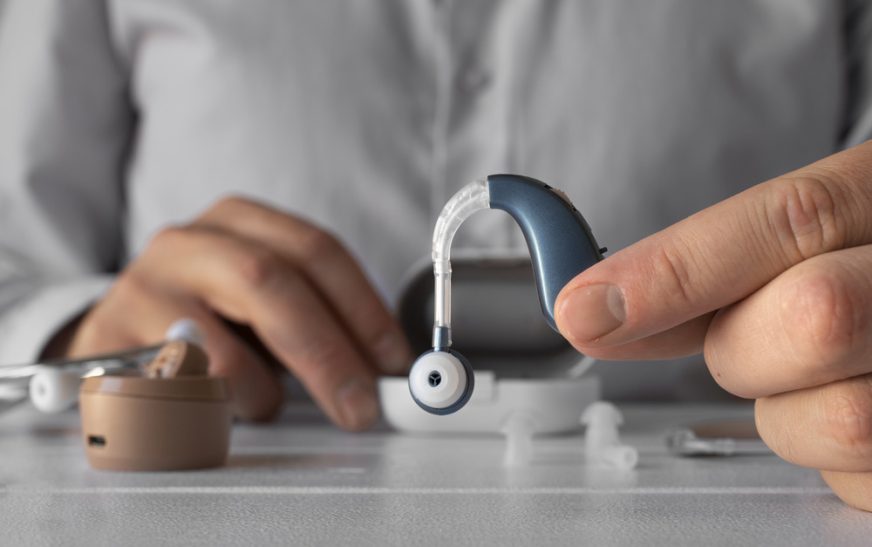Purchasing hearing aids is a significant decision, both financially and in terms of lifestyle impact. With a wide range of options available, from various styles and brands to differing features and technologies, it can be overwhelming to choose the right one.
Thankfully, many providers and audiologists offer ways to try hearing aids before you buy, allowing you to experience the benefits and functionality of different devices firsthand.
This article will guide you through the best practices for testing hearing aids and what to look for during your trial period to ensure you make an informed decision.
The Importance of a Hearing Aid Trial
Hearing aids are highly personalized devices, and what works for one person may not work for another. A trial period is essential because it allows you to wear hearing aids in your daily environment, testing their comfort, sound quality, and usability.
During the trial, you can assess how well the hearing aids help you understand speech in different settings, from quiet rooms to noisy environments like restaurants or busy streets. It also allows you to identify any discomfort or issues with the fit and functionality of the device.
Consult an Audiologist for Professional Guidance
The first step in trying hearing aids before purchasing is to consult with a qualified audiologist. An audiologist will perform a thorough hearing evaluation, determining the degree and type of hearing loss you have.
This evaluation is critical because it helps in recommending the most suitable hearing aid style and technology for your needs.
Audiologists are also knowledgeable about the different hearing aid brands and models available on the market.
They can provide you with a curated list of options based on your hearing profile, lifestyle, and budget. Some clinics even offer in-office demos where you can try different hearing aids on the spot and get a feel for their fit and sound quality.
Ask About a Free Hearing Aid Trial Period
Many hearing aid manufacturers and providers offer a free trial period, typically ranging from 30 to 60 days. During this time, you can test the hearing aids in real-life scenarios without any obligation to buy. Make sure to inquire about this trial period when consulting with your audiologist or visiting a hearing aid retailer.
When considering a trial, ensure you understand the terms and conditions. Some providers may require a deposit that is refundable upon return, while others might charge a small fee if you decide not to purchase the device after the trial. It’s crucial to get these details in writing to avoid any misunderstandings later.
Explore Different Hearing Aid Styles and Technologies
Hearing aids come in various styles, such as behind-the-ear (BTE), in-the-ear (ITE), and completely in-canal (CIC) models. Each style has its advantages and may suit different types of hearing loss and personal preferences. During your trial, it’s essential to try different styles to see which one feels the most comfortable and effective.
Additionally, hearing aids are equipped with various technologies, such as digital noise reduction, directional microphones, Bluetooth connectivity, and smartphone compatibility.
Some advanced models even come with artificial intelligence (AI) to adapt to your listening environment automatically. Testing different models will help you understand which features are most beneficial to you.
Test the Hearing Aids in Various Environments
One of the main benefits of trying hearing aids before buying is that you get to test them in your everyday life. Make sure to wear the hearing aids in a variety of settings to see how they perform. Here are some environments to consider:
Quiet Environments:
Test the hearing aids at home while watching TV or having a conversation. Check for clarity, comfort, and ease of use.
Noisy Environments:
Visit a busy restaurant or a shopping mall to see how well the hearing aids reduce background noise and enhance speech clarity.
Outdoor Settings:
Take a walk in a park or a crowded street to assess how the hearing aids handle wind noise and other environmental sounds.
Phone Calls and Streaming:
If the hearing aids have Bluetooth functionality, test them with phone calls and streaming music or podcasts from your smartphone.
Taking note of how hearing aids perform in these different scenarios will give you a better understanding of their capabilities and limitations.
Adjust and Fine-Tune Your Hearing Aids During the Trial
During your trial period, you might notice that the hearing aids need adjustments to better suit your hearing needs. Most modern hearing aids come with adjustable settings that can be fine-tuned by your audiologist.
Don’t hesitate to schedule follow-up appointments to optimize the settings for maximum comfort and performance.
Your audiologist can help you adjust the volume levels, frequency response, noise reduction settings, and other features. Some hearing aids even come with a smartphone app that allows you to make these adjustments on your own.
The goal is to ensure that the hearing aids provide the most natural sound quality possible, tailored to your specific needs.
Consider Comfort and Fit
The comfort and fit of hearing aids are just as important as their sound quality. A poorly fitting hearing aid can cause discomfort, skin irritation, or even pain, which might discourage you from wearing it consistently.
During your trial, pay close attention to how the hearing aids feel after extended use. They should fit snugly but not too tight, and they shouldn’t cause any discomfort in or around your ear.
If you experience any discomfort, let your audiologist know. They can adjust the fit or suggest a different style that might be more suitable for your ear shape and size.
Evaluate the Battery Life and Maintenance Needs
Different hearing aids have varying battery life and maintenance requirements. Some models use disposable batteries, while others come with rechargeable options. During your trial period, consider how often you need to change or recharge the batteries and whether this fits your lifestyle. Also, assess the ease of cleaning and maintaining the hearing aids, as this will be part of your daily routine.
Gather Feedback from Friends and Family
Your friends and family can offer valuable insights during your trial period. They can help you gauge how well you are hearing during conversations and social gatherings. Their feedback can provide an external perspective on how the hearing aids are performing and whether they are making a noticeable difference in your hearing abilities.
Make an Informed Decision
After the trial period, review your experience with each hearing aid model you tested. Consider factors such as sound quality, comfort, fit, battery life, ease of use, and overall satisfaction. Discuss any concerns or questions with your audiologist to get their professional input.
Choosing the right hearing aids is a highly personal decision, and taking the time to try before you buy will ensure you make a choice that enhances your quality of life.
Conclusion
Trying hearing aids before you buy is a crucial step in finding the perfect device that suits your hearing needs and lifestyle. By consulting with an audiologist, taking advantage of trial periods, testing different styles and technologies, and considering comfort and functionality, you can make an informed decision that ensures you get the best possible hearing experience.
Don’t rush the process—take your time, explore your options, and choose a hearing aid that will genuinely improve your daily life.


















